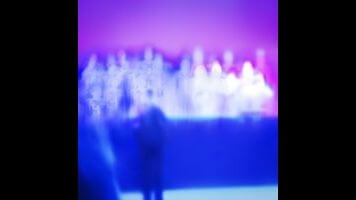Tim Hecker’s compositions are engineered to drift off into the ether

Now three years removed from Virgins—his widely touted 2013 album that is as effectively confrontational as it is contemplative—artist Tim Hecker returns with his first record for 4AD. Love Streams feels decidedly distant by comparison, less an up-close pen-and-notebook study of the complexity of sound and more an experiment of how to willfully let sound seep into and fill faraway spaces. It’s almost in direct response to its predecessor: quivers of ambient electronics, woodwinds, and swirls of vocals that skim along the stratosphere like jet streams as you strain to hear what’s happening in the recesses of tracks. Virgins is dark and brilliant and haunting as it raises the hairs on the back of your neck, while Love Streams washes over you—or sometimes floats by off in the horizon—due to its subtlety and complex, deliberate construction.
The way that Hecker calculates the temperament of sound and builds the environment of a record from the ground up is something to behold. And it’s not much of a leap to say he basks in the challenge. Recorded in Reykjavik over the span of two years, Love Streams features contributions from a select group of collaborators that appeared on Virgins (like Montreal composer and pianist Kara-Lis Coverdale). He’s also enlisted the Icelandic Choir Ensemble, providing looped and warped vocal elements that summon enlightenment within the airy, spiritual tracks. “Music Of The Air” pretty much lets you know its intent with the title, as unintelligible clipped vocals get caught in a turning tunnel, gently tumbling over one another before dissolving beneath slow-burning static.
The album’s best tracks—“Castrati Stack” and the ambitious closer “Black Phase”—are also its most enveloping. The former violently rips open when a barreling wave of noise creates an entryway for subterrestrial buzzes. On the latter, a sinister chunk of sustain juts around corner after corner before being chased into the distance by faint calls from the chorus.
On “Violet Monumental” parts one and two, a flurry of vocal bits gradually coalesce on top of a very faint pulse. Then the track’s celestial structure reveals itself through a series of layered electronics that acts like bright—nearly painful—morning light beating through a giant bay window. Eventually the collective track devolves into a series of intrusive, klunky clacks that bump out the more serene air in favor of a more sinister scape. Those are the moments that stand out the most on Love Streams: the ones that startle you back into consciousness.